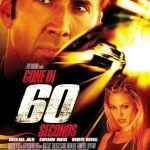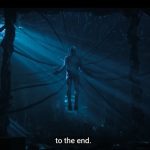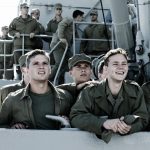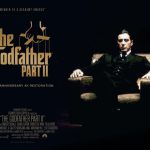WINDTALKERS (2002)
- quoctinh
- November 12, 2024
Windtalkers (2002): A Story of Friendship, Sacrifice, and the Code that Changed WWII
Introduction
Windtalkers, directed by John Woo and released in 2002, is a war drama set during World War II. The film tells the little-known story of the Navajo Code Talkers, Native American Marines who used their language to create an unbreakable code that proved instrumental in the United States’ Pacific campaign. Starring Nicolas Cage, Adam Beach, and Christian Slater, Windtalkers combines intense battle scenes with a portrayal of the complexities of duty, friendship, and identity.
Plot Summary
The story follows Sergeant Joe Enders (Nicolas Cage), a battle-hardened Marine who is assigned to protect a Navajo code talker, Private Ben Yahzee (Adam Beach). After surviving a traumatic battle where he lost his squad, Enders is struggling with physical and emotional scars, feeling survivor’s guilt and deep-seated cynicism about the war. His new assignment — protecting Yahzee, while ensuring that the Navajo code never falls into enemy hands — puts him in an ethically challenging situation.
Yahzee is part of the newly developed Code Talker program, where Navajo Marines use their language to create an unbreakable code that the Japanese cannot decipher. The two men develop a complicated relationship as they fight together on the front lines, with Enders grappling with his sense of duty and the possibility that he may have to kill Yahzee to protect the code if they’re at risk of capture.
As they face the harrowing realities of war, from brutal combat to moral dilemmas, Enders and Yahzee’s relationship deepens. Over time, Enders moves beyond his initial mistrust, gaining respect and friendship for Yahzee. In turn, Yahzee confronts the brutality of war and the sacrifices required of him, not only as a Marine but also as a Navajo serving a country that has historically marginalized his people.
Themes and Historical Context
Windtalkers touches on themes of loyalty, sacrifice, and the complexities of identity. At its core, the film examines the burden of duty, both personal and professional, and the moral weight of war. Enders’s internal conflict represents the struggle between duty to orders and the ethical complications of protecting another soldier solely as a means to an end. This conflict forces him to re-evaluate his beliefs about loyalty and friendship.
The film also examines the unique position of Navajo soldiers in the U.S. military. As Native Americans, they were fighting for a country that, until recently, had marginalized them and their culture. Despite this, many Navajos proudly served, bringing their language to the battlefield to help the Allied cause. By using their language as a weapon, these Code Talkers played a pivotal role in the Pacific, yet their contributions remained classified and unrecognized for decades.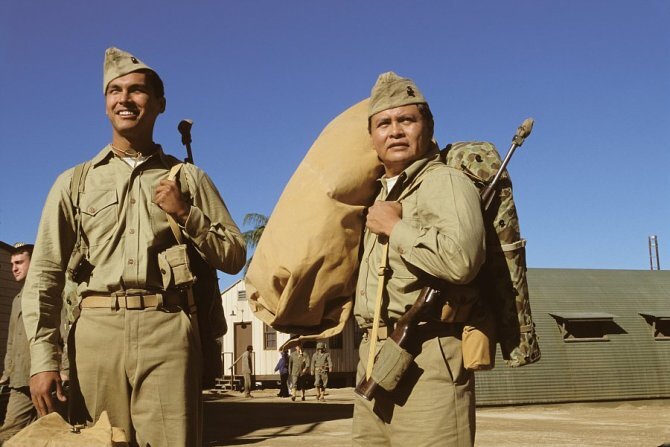
Nicolas Cage and Adam Beach’s Performances
Cage and Beach bring intensity to their roles, particularly in the evolution of their characters’ friendship. Cage portrays Enders with a hardened, detached demeanor that gradually softens as he grows closer to Yahzee. His portrayal of Enders’ struggle with PTSD and guilt over his wartime decisions adds depth to the character, making him more than a typical war hero. Cage effectively conveys the internal turmoil Enders faces, highlighting how war can strip away one’s humanity, only for it to be rediscovered through sacrifice and connection.
Adam Beach’s performance as Yahzee is both heartfelt and nuanced. Beach portrays Yahzee as an optimistic, dutiful Marine who, despite the hardships he faces, is proud of his heritage and eager to contribute to the war effort. His performance brings out Yahzee’s humanity and courage, showing a man determined to prove his worth and protect his fellow soldiers, even in the face of discrimination and skepticism. Beach’s portrayal gives emotional weight to Yahzee’s character, capturing the conflict between his loyalty to his country and his identity as a Navajo.
John Woo’s Direction and Action Sequences
John Woo is known for his expertise in directing action sequences, and Windtalkers is no exception. The film’s battle scenes are intense, gritty, and chaotic, reflecting the violence and unpredictability of war. Woo’s stylistic trademarks — including slow-motion shots and tightly choreographed action sequences — are evident in the film, creating a visceral experience for viewers. These scenes, while dramatic, underscore the brutality and sacrifices faced by soldiers on the front lines.
However, some critics noted that Woo’s emphasis on action sometimes detracts from the character-driven aspects of the story. The intense battle sequences, while visually striking, can overshadow the quieter moments that explore the Code Talkers’ contributions and the moral complexities of war. Despite this, Woo’s direction captures the scale and scope of the Pacific Theater, immersing viewers in the tension and unpredictability of each encounter.
Representation of the Navajo Code Talkers
Windtalkers brings attention to the Code Talkers’ role in World War II, a chapter of history that was largely overlooked for many years. The Navajo language was uniquely suited for the task due to its complexity and lack of a written form, making it impossible for Japanese codebreakers to decipher. The film shows how the code, despite its strategic importance, was only as secure as the Code Talkers themselves. By highlighting their presence and bravery, Windtalkers pays homage to these Navajo Marines and their critical contributions to the war effort.
However, some critics and historians pointed out that the film could have delved deeper into the Code Talkers’ stories and experiences. The focus on action sequences and Enders’ storyline often sidelines the Navajo soldiers, who are central to the film’s historical premise. While Yahzee is given a prominent role, other Navajo characters are underdeveloped, leaving viewers with only a partial understanding of their role and significance.
Music and Cinematography
The score by James Horner enhances the film’s emotional tone, blending solemn and triumphant elements that reflect the courage and tragedy of war. Horner’s music adds depth to scenes of camaraderie and loss, contributing to the film’s somber mood while celebrating the bravery of the Code Talkers.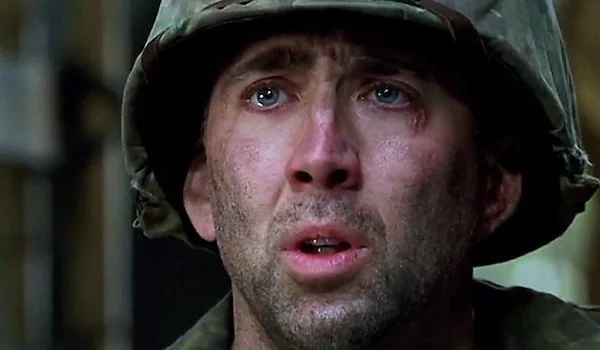
The cinematography, by Jeffrey L. Kimball, captures the contrasting beauty and horror of the Pacific islands, from lush landscapes to desolate battlefields. The scenes filmed in Hawaii add authenticity to the setting, while the vivid cinematography draws viewers into the intensity of each confrontation. By juxtaposing moments of tranquility with scenes of chaos, the film emphasizes the disruption and devastation of war.
Critical Reception and Legacy
Windtalkers received mixed reviews from critics upon its release. While some praised its attempt to tell an important and underrepresented story, others felt that the film’s emphasis on action overshadowed its characters and historical focus. Cage and Beach’s performances were widely appreciated, especially for the way they brought humanity to the story, but the film was critiqued for not fully exploring the perspective of the Navajo Code Talkers.
Despite the mixed reviews, Windtalkers succeeded in raising awareness of the Code Talkers’ contributions, sparking renewed interest in their story. The film remains one of the few mainstream representations of Native American contributions to World War II, and it helped bring long-overdue recognition to these heroes. The actual Code Talkers received the Congressional Gold Medal in 2001, a year before the film’s release, in recognition of their service and sacrifice.
Conclusion
Windtalkers stands as a tribute to the courage and resilience of the Navajo Code Talkers and the Marines who fought alongside them. Through its exploration of friendship, duty, and sacrifice, the film sheds light on the unbreakable code that helped turn the tide of World War II. While it may not delve as deeply into the Code Talkers’ unique experiences as some might hope, Windtalkers offers a powerful, action-driven portrayal of war, highlighting a pivotal but often overlooked chapter in history.



